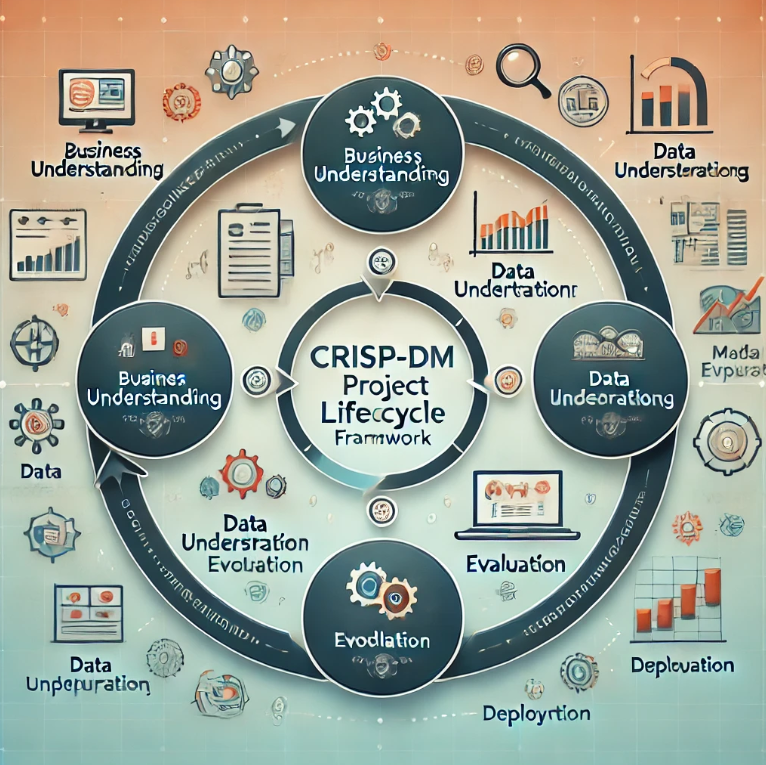Exploring the CRISP-DM Framework: A Comprehensive Guide for Data Enthusiasts
In the world of data science, a robust framework can be the difference between a successful project and one that falls short. Enter CRISP-DM, or the Cross-Industry Standard Process for Data Mining. This versatile framework is open for anyone to use, making it an ideal choice for data practitioners and enthusiasts alike.
A Brief History of CRISP-DM
CRISP-DM was initially developed by a collaboration of companies, including SPSS, Daimler-Benz, and NCR, aiming to create a scalable and adaptable data mining process. Over the years, the CRISP-DM model has evolved into one of the most widely adopted frameworks in the data science community, renowned for its flexibility and user-friendly nature.
The Six Phases of CRISP-DM
What sets CRISP-DM apart is its cyclical nature, allowing data scientists to move fluidly between phases as they refine their projects. Here’s a breakdown of the six essential phases:
- Business Understanding: Identify project objectives and define success criteria.
- Data Understanding: Collect initial data and explore its characteristics to gain insights.
- Data Preparation: Preprocess the data, handling missing values, and transforming variables to get it ready for modeling.
- Modeling: Apply various modeling techniques, adjusting parameters to find the most effective model.
- Evaluation: Assess how well the model meets business goals, ensuring it’s ready for deployment.
- Deployment: Implement the model into a production environment, making it usable by stakeholders.
The arrows in the model highlight a natural workflow from Business Understanding to Deployment, while the circular arrows remind us that data science is an iterative process. Often, a new question or insight can prompt you to revisit earlier phases, ensuring continuous improvement and relevance.
Real-Life Application: A Case Study
Let’s visualize this framework through a relatable story. Imagine a local coffee shop in your town decides to boost its customer loyalty program. They begin by identifying their challenges—how to retain customers in a competitive market. This inquiry leads them to the Business Understanding phase.
Next, they gather data from customer transactions (Data Understanding), analyze buying patterns and preferences (Data Preparation), build a model to predict which customers are likely to return (Modeling), assess the model’s effectiveness in driving engagement (Evaluation), and finally, launch a refreshed loyalty program based on insights gained (Deployment).
By following the CRISP-DM framework, the coffee shop not only enhanced customer retention but also created a more personalized experience for its patrons. This story highlights the practical application of CRISP-DM, showing how even a small local business can leverage data for substantial growth.
The Path Forward with CRISP-DM
CRISP-DM reminds us that data science is not just a linear process; it’s a living, breathing endeavor. Whether you’re a budding data scientist or just a curious individual exploring the realm of AI, understanding and using this framework can empower you to ask the right questions and leverage data to create meaningful impacts.
The AI Buzz Hub team is excited to see where these breakthroughs take us. Want to stay in the loop on all things AI? Subscribe to our newsletter or share this article with your fellow enthusiasts!




